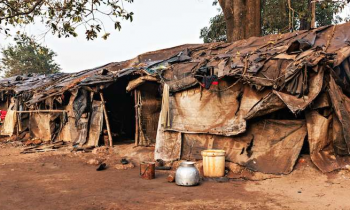Working out where to most effectively reduce short-lived climate pollutants, greenhouse gases and other air pollutants in order to build mitigation scenarios and quantify the benefits to climate, health, and crops can seem like a daunting task. A recent upgrade to the Stockholm Environment Institute’s Long-range Energy Alternatives Planning (LEAP) tool is making this task easier for planners and policy makers.
The 2018 version of the tool was released this week at the Science-Policy-Business Forum on the margins of the Third UN Environment Assembly. The new version includes numerous updates and additions to the widely-used energy analysis tool. This significant upgrade comes as the UN Environmental Assembly meets to discuss the need to confront pollution.
LEAP is user-friendly and free to developing countries, making it the de facto standard for integrated resource planning and greenhouse gas mitigation assessment. Now LEAP is expanding to cover land use and forestry, as well as emissions-related impacts.
Among the highlights is the Integrated Benefits Calculator (IBC), which translates emission scenarios into impacts, such as avoided premature deaths and crop losses. For example, policy-makers can see how many lives would be saved through an emissions reduction policy – and view that impact by age, disease and contributing pollutant.
LEAP-IBC can also estimate how future emission reductions would reduce global temperature rise, putting regional action into a global perspective.
“These calculations can be run in just a few seconds and do not require the help of experienced modellers,” said Charlie Heaps, SEI senior scientist and LEAP developer. “For the first time, planners in developing countries can access – and easily use – this computing-intense modelling methodology to estimate the impacts of air pollution, one of the top environmental killers.”
SEI developed LEAP-IBC in collaboration with the U.S. Environmental Protection Agency and Daven Henze at the University of Colorado, and with support from the Climate and Clean Air Coalition. It will be available to all of LEAP’s 35,000 users in 195 countries, including government agencies, academics, non-profits, consultants and energy utilities.
Policy-makers can use LEAP-IBC not only to understand impacts but also to calculate future national emissions from greenhouse gases, short-lived climate pollutants (SLCPs) and other air pollutants.
A live demonstration of the tool at the event showed how synergies for achieving air quality and climate change goals could be explored in real time and how the tool enables communication about reducing emissions between decision makers and stakeholders from different sectors. These aspects were highlighted by Simpson Attieku Senior Energy Analyst, at the Energy Commission of Ghana, where LEAP has been used for over a decade in different parts of government, and where LEAP-IBC is now being used to show the relevance of mitigation actions to different ministries.
Mr Attieku explained how the Energy Commission, Environmental Protection Agency and the Ministries of Finance and Planning, are joining efforts to use LEAP-IBC for planning and monitoring. The fact that LEAP-IBC now covers energy and non-energy sources of pollution and can estimate the benefits of action for health, crop yield and climate makes it much more useful for decision making in Ghana. An urban application of LEAP-IBC is also being developed for Accra in 2018.
The 2018 version of LEAP also comes with numerous other upgrades. They include capabilities to:
- Model land use change: Users will be able to input land use in each region of their country and account for future changes such as deforestation, agricultural expansion and reforestation.
- Assess Biomass Energy Strategies: As numerous African countries consider their future management of biomass supply and demand, they can turn to LEAP’s new land-use and forestry capabilities. LEAP can even track the supplies of wood generated by land clearances.
- Create maps for multi-regional data sets: A new mapping engine is now included as part of the standard LEAP installation package, providing better results visualization.
Using the LEAP-IBC tool countries will be able to characterize national emissions of greenhouse gases, short-lived climate pollutants and other air pollutants; explore alternative emission reduction scenarios ; compare results across alternative scenarios ; inform nationally appropriate action on climate, air quality and SLCPs; and calculate country-level health, agriculture, and global climate benefits.
Daniel Tutu Benefoh, Lead Greenhouse Gas Inventory, Monitoring & Reporting Program, Environment Protection Agency, Ghana, said the LEAP-IBC tool was a helpful “one-stop-shop” for planners.
“Rather than using multiple tools, I use LEAP-IBC which allows both energy and non-energy emissions from all sectors to be calculated with the added ability to assess impacts of mitigation scenarios,” Mr Benefoh said. “LEAP-IBC can be easily modifed to capture the impact of specifc activities, such as replacing kerosene lamps with solar lanterns if you want to, a convenience you can’t fnd in any other software. This means that LEAP-IBC can effectively serve the interests of local users.”
LEAP currently has 35,000 users in 195 countries, including government agencies, academics, non-profits, consultants and energy utilities. The combined LEAP-IBC package is currently available in 71 countries.



